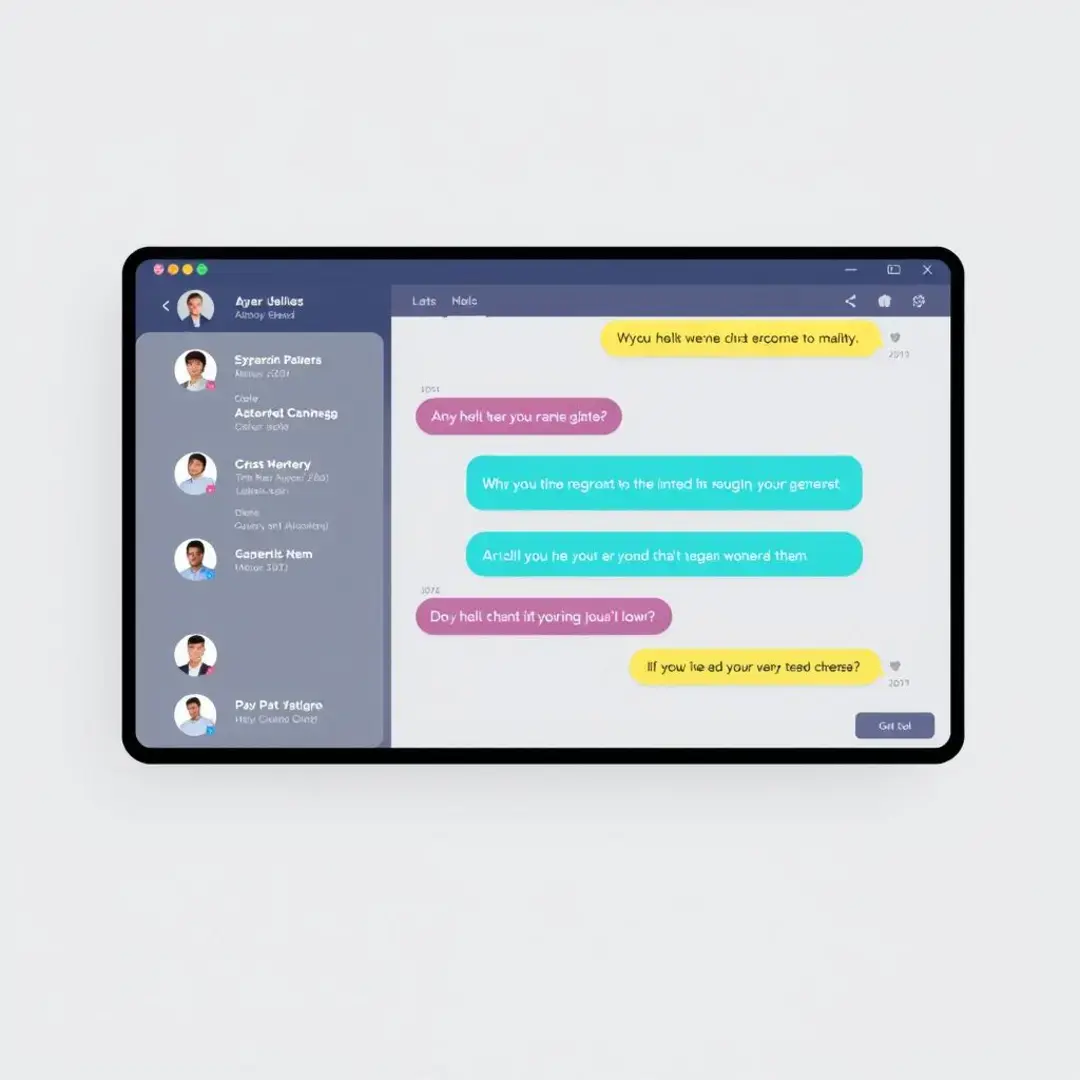Chat Interfaces
Introduction

Overview of Chat Interfaces in Natural Language Processing (NLP)
Chat interfaces have transformed the way businesses and individuals interact with technology. They serve as a bridge between users and machines, leveraging natural language processing (NLP) to create seamless communication. Today, chatbots and intelligent virtual assistants are commonplace, helping users accomplish tasks ranging from simple inquiries to complex problem-solving. The technology behind these interfaces is rapidly evolving, making them more effective and user-friendly.
As the demand for chat interfaces grows, so does the complexity of their design. Innovators are focusing on creating intuitive user experiences that facilitate engaging and meaningful conversations. Advanced NLP techniques, such as sentiment analysis and intent recognition, are being employed to enhance the context and relevance of interactions. This depth of understanding allows chat interfaces to respond more accurately to user queries, making them invaluable tools in various sectors.
Key Trends in Chat Interfaces

Emerging Trends
The incorporation of conversational AI is a significant trend in the development of chat interfaces. These systems are designed to mimic human conversation, allowing for a more natural interaction. Through machine learning, conversational AI can improve over time, learning from past interactions to deliver better user experiences. This leap in technology not only advances user interaction but also provides businesses with insightful data on customer preferences and behaviors.
Another exciting trend is the emergence of multimodal interfaces that support various communication forms. Users can engage through text, voice, images, or even video, creating a richer interaction experience. This flexibility is vital in today’s diverse digital landscape, as it caters to individual user preferences. As a result, businesses can enhance engagement and customer satisfaction by providing adaptive communication options.
Personalization is a key focus for developing chat interfaces, allowing for tailored experiences that resonate with individual users. Leveraging data analytics, chatbots can offer customized recommendations and support based on user history and behavior. This personalized approach fosters stronger connections between users and brands, increasing the likelihood of retention and loyalty.
Industry Impact
Chat interfaces are revolutionizing customer service by providing instant support and recommendations. This not only enhances the customer experience but also reduces operational costs for companies. By handling common inquiries through automation, customer service representatives can focus on more complex issues, improving efficiency across the board. Many businesses are reporting significantly higher customer satisfaction scores since implementing chat interfaces.
The impact of chat interfaces extends into marketing and sales strategies as well. Personalized interactions through chatbots provide businesses the opportunity to engage customers at critical decision-making moments. By delivering tailored content and offers, companies can effectively nurture leads and convert prospects into customers. This shift towards conversational marketing is becoming essential in an increasingly competitive environment.
Beyond customer engagement, chat interfaces are also streamlining internal communication within organizations. Teams can collaborate more efficiently using chatbots that facilitate project management, scheduling, and information sharing. As remote work becomes more prevalent, these systems help maintain connectivity and collaboration, ensuring teams remain productive and aligned irrespective of their physical location.
Challenges and Limitations
While chat interfaces offer numerous benefits, they are also subject to challenges like bias and fairness. NLP systems may inadvertently perpetuate existing biases present in the training data, resulting in skewed interactions. It’s essential for developers to prioritize fairness through diverse data training and continuous testing to ensure inclusivity in responses.
User privacy is a critical consideration when developing and implementing chat interfaces. As these systems gather vast amounts of data to improve interactions, it’s paramount to establish robust security measures to protect sensitive information. Transparency in data usage and adherence to regulations such as GDPR are fundamental to building trust with users.
Despite advancements in NLP technology, limitations still exist, particularly in understanding context and nuance. Misinterpretations can lead to frustrating user experiences. Continuous refinement of algorithms and machine learning models is vital for enhancing the accuracy and reliability of chat interfaces.
Future Outlook

Future Developments
The future of chat interfaces is bright, with anticipated advancements in NLP and machine learning. These technologies are expected to further enhance the capabilities of chatbots, enabling them to understand context more deeply and respond more accurately. As research progresses, the goal is to create interfaces that can hold complex, human-like conversations while maintaining high efficiency.
Integrating augmented and virtual reality (AR/VR) with chat interfaces is also on the horizon, allowing users to engage in dynamic and immersive interactions. Imagine discussing products in a simulated environment or receiving real-time support through AR. These integrations promise to transform how users interact with technology, making experiences more engaging and informative.
Blockchain technology has the potential to enhance the security and trustworthiness of chat interfaces. By decentralizing data and ensuring transparent transactions, businesses can safeguard user information while creating a verifiable record of interactions. This could fundamentally change how users perceive the reliability of chat solutions.
Market Predictions
Market predictions suggest that the demand for chat interfaces will continue to grow exponentially. With businesses recognizing the importance of efficient communication, investments in these technologies are on the rise. The chat interface market is projected to reach new heights as innovations continue to emerge and integrate into everyday applications.
New market segments are also emerging, including sectors such as healthcare, education, and financial services. Each segment offers unique opportunities for chat interfaces to enhance user interactions and streamline processes. As these sectors adapt to digital demands, chat interfaces will play a crucial role in facilitating communication and information exchange.
As more players enter the field, a competitive landscape is developing around chat interfaces. Companies are continuously working to differentiate their offerings through innovative features and superior user experiences. This competition will spur further advancements and improvements in the technology, benefiting users and businesses alike.
Potential Impact on Users
The ongoing evolution of chat interfaces promises an enhanced user experience characterized by greater engagement and satisfaction. As these technologies become more intuitive and personalized, users will find their interactions increasingly relevant and productive. This shift is likely to lead to higher engagement rates and foster loyalty between consumers and businesses.
Chat interfaces are poised to significantly boost productivity and efficiency both for businesses and users. By automating repetitive tasks and providing instant access to information, they allow users to focus on more meaningful endeavors. Organizations can achieve remarkable efficiencies, freeing up resources to drive innovation and enhance service delivery.
As chat interfaces evolve, ethical considerations will become even more essential. Ensuring user welfare and fostering responsible AI practices are paramount. Developers must remain vigilant in addressing biases, maintaining data privacy, and ensuring that these technologies enhance rather than detract from user experiences.
How to Choose the Right App

Step-by-Step Guide
Begin by clearly defining your objectives for implementing a chat interface. What do you hope to achieve? Increased engagement? Improved customer service? By setting measurable objectives, you can focus on finding a solution that best meets those needs.
Next, conduct thorough evaluations of various chat interface platforms available in the market. Compare features, user-friendliness, and customer feedback to gauge the effectiveness of each option. It may be beneficial to request demos to better understand how each platform functions in practice.
Finally, follow best practices for implementation and deployment to ensure a successful rollout. Involve stakeholders from your team to gather input and buy-in. Provide adequate training and resources to promote user adoption and make adjustments based on real-time feedback during the initial deployment phase.
Conclusion

In conclusion, chat interfaces represent a significant advancement in natural language processing and human-computer interaction. As they evolve, businesses are leveraging these technologies to improve customer engagement, streamline internal communication, and enhance operational efficiency. While challenges remain, the outlook for chat interfaces is promising. By considering key trends, potential impacts, and best practices for selection and implementation, organizations can harness the transformative power of chat interfaces to thrive in a digital landscape. The future is bright, and those willing to embrace this change will be well-positioned to reap the benefits.
Factors to Consider
When choosing a chat interface application, it’s important to evaluate your specific needs and requirements. Different chat applications serve different purposes, ranging from customer service solutions to internal collaboration tools. Understanding your main objectives will help you narrow down your options and select an interface that aligns with your goals.
Another critical factor is the integration capabilities of the chat interface with your existing systems. Seamless integration enhances overall efficiency and eases the transition process. Check whether the chat interface can connect with your current CRM, project management tools, and databases to ensure a smooth operational flow.
Scalability is crucial, especially for growing businesses. The chat interface you choose should be able to accommodate increasing user demand without compromising performance. Evaluating historical performance metrics and future scalability options will be critical in ensuring longevity and effectiveness.





